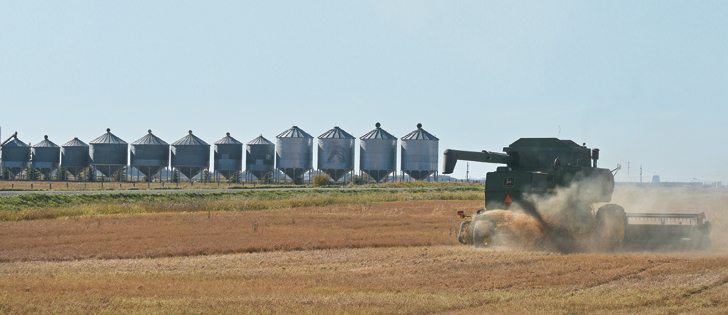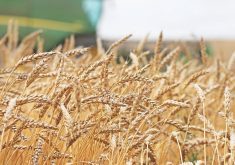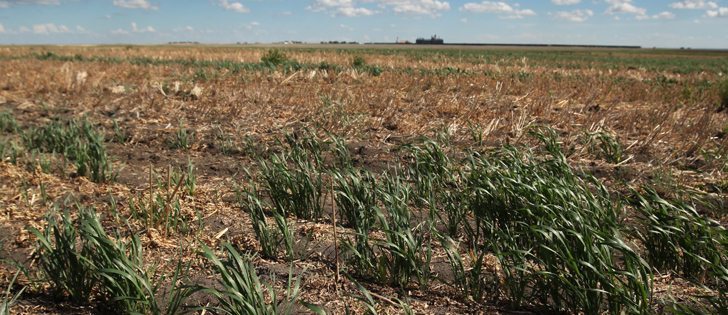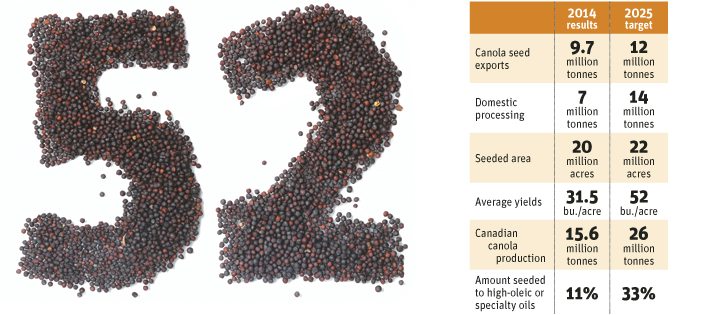Statistics Canada report | Total production lower than 2013-14, better than expected
There wasn’t a collective yawn when Statistics Canada released its final crop estimate Dec. 5, but there may have been collective eye rolling.
Instead of reacting negatively to Statistics Canada’s estimates that canola and wheat estimates were higher than previously estimated, the market took it all in stride.
Statistics Canada pegged canola 1.5 million tonnes higher than its estimate of 14 million tonnes in the previous report, which was issued Oct. 3. The new 15.5 million tonnes estimate should have sparked a market drop, but canola prices rose after a brief dip, said market analyst Errol Anderson of ProMarket Wire.
Read Also

August rain welcome, but offered limited relief
Increased precipitation in August aids farmers prior to harvest in southern prairies of Canada.
“When that canola number came out, I thought the canola market would drop below $400 a tonne because, in all honesty, it should, but since then we have seen strength in the soybeans, and canola has done nothing but go up after Stats Can,” he said.
“It is a reflection the market is trading off its own ideas right now. I think the trade to some degree will discount Stats Can somewhat and trade off their own numbers.”
Anderson said industry estimated the 2014 canola crop to be around 15 million tonnes, not the 15.5 million tonnes in the report.
Statistics Canada pegged the wheat crop at 29.2 million tonnes, up from its previous estimate of 27.4 million tonnes. Anderson believes this is also about half a million tonnes too high.
The discrepancy between what Statistics Canada reports from its surveys with farmers and what industry believes to be the correct final crop numbers is not new, said Anderson.
“It has been going on for quite some time. Every time a government number comes out that appears out of whack, the trade just disregards it,” he said.
“It’s not the first time. The trade is pretty astute on their knowledge on supply and demand. Certainly Stats Can is an indicator, but it certainly is not God-like to the trade.”
Brenda Tjaden Lepp, chief analyst with Farm Link Marketing Solutions, said her firm looked at the Statistics Canada numbers, but like other industry analysts, didn’t believe there was an additional 1.5 million tonnes of canola on Canadian farms.
“It was interesting on Friday (Dec. 5) to see the markets start to go lower, turn around and go higher, and that was a reflection that it wasn’t a very bearish surprise to the people who actually have money in the game,” she said.
Tjaden-Lepp said her company was using 15.3 million tonnes of canola for their calculations.
“So people are looking at the huge increase in the canola and wheat estimates between October and December, but we had been using a bigger canola number for a long time, and so had pretty much every one else in the industry,” she said.
Despite industry analysts questioning the validity of Statistics Canada numbers, Tjaden-Lepp said producers and analysts who are trying to market crops need to enter some kind of supply and demand numbers into their tables throughout the winter. By spring they can compare Statistics Canada’s supply estimates with the Canadian Grain Commission’s export data.
“Everyone has their own different use of these S and Ds, but it’s a pretty important tool for us, I’d say. It would be nice if we didn’t see two and a half million tonne changes from one report to the next on these major crops. It really makes our work a lot more challenging to not have credible production numbers out of Stats Can.”
The other crop estimates held fewer surprises.
Flax production was estimated at 847,000 tonnes. In September, Statistics Canada estimated production at 922,000 tonnes. Last year’s crop was 724,000 tonnes.
Tjaden-Lepp said her company anticipated increased flax yields from last year and had advised clients to have already sold 60 percent of their crop. They would add to their flax sales if Statistics Canada had come in closer to a million tonnes.
“That 847,000 is pretty close to where we were expecting.”
Anderson said he likes the flax estimate and is expecting good buyer demand for flax with strong bids.
Statistics Canada’s report was based on a survey of 26,200 farmers conducted from Oct. 22 to Nov. 13.















